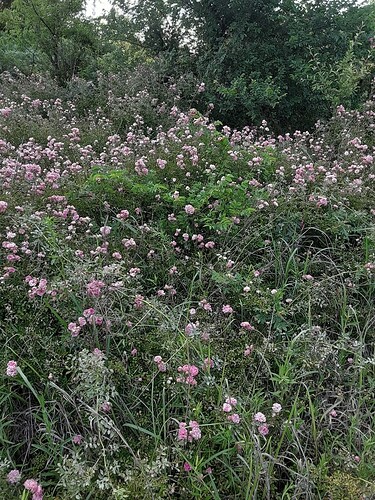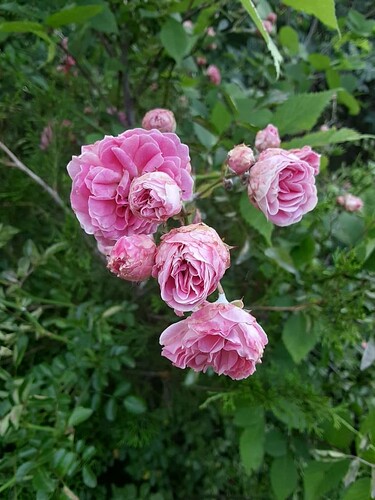Shortly after I began growing roses my interest turned to the native roses in my area. I’m an avid proponent of native pollinators. I saw some comments online talking about wild roses growing all along the banks of a nearby lake and went to check it out…
Here’s hoping I got the post formatting correct.
After two trips of searching, I finally found what naively looked to me like a wild rose. A dense thicket of canes. Its thorns were sharp and unfriendly. Prolific suckering and long canes crawling along the dirt in the same manner as a Virginia Creeper vine.
Note: I did not take any of the pictures on this post.
Unfortunately, my own photos of the plants were lost when I broke my phone, and I went too late in the season to see any flowers anyway. But I was able to find some pictures online:
Double petals? Confusing.
A little further down was a second specimen demonstrating the wild manner of growth:
Some more pictures, not the best quality unfortunately:
Very small, ovoid foliage.
I can’t say for sure, but I believe these roses to be once bloomers. The only pictures I could find of the flowers were all dated in May, and when I went in August I didn’t see any signs of flowers, spent blooms, or even hips. Both roses are growing on a man made walkway surrounded by water on both sides a few hundred feet from the shore. The lake itself was made in 1919.
Even more curiously, there is another very similar “wild” rose thriving in the woods near a different lake on the other side of the metro:
My first thought was that it was a strange, natural hybrid of modern and species. But that seems unlikely. They weren’t growing like any rose I’d ever seen, and my hands were scratched bloody from the thorns. Perhaps an old rambler, the last remaining specimen of a beautification project many decades ago.
I’m eager to hear your thoughts.












